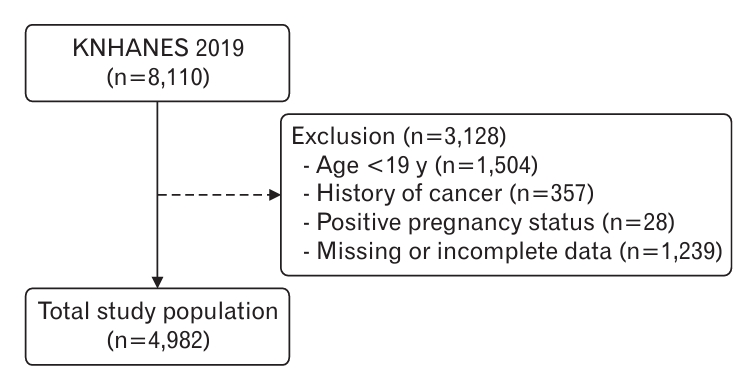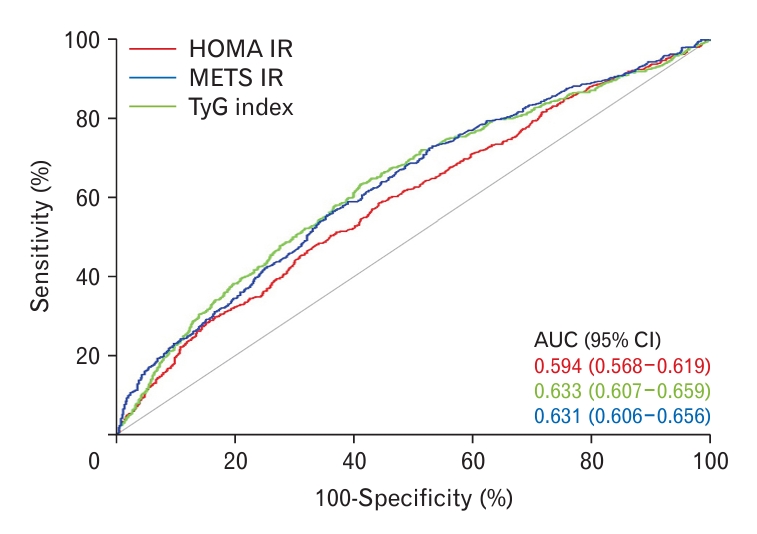 |
 |
- Search
| Korean J Fam Med > Epub ahead of print |
|
Abstract
Background
Methods
Results
Notes
FUNDING
This research was supported by the Technology Innovation Program, A Platform for Prediction and Management of Health Risk Based on Personal Big Data and Life-logging, funded by the Ministry of Trade, Industry & Energy (grant no., 200002781) and the Korea Institute of Planning and Evaluation for Technology in Food, Agriculture and Forestry through the High Value-Added Food Technology Development Program, funded by the Ministry of Agriculture, Food and Rural Affairs (grant no., 321030051HD030).
SUPPLEMENTARY MATERIALS
Figure. 1.

Figure. 2.

Figure. 3.

Table 1.
Values are presented as number (%) or mean±standard deviation. Categorical and continuous variables were calculated using the weighted chi-square test and weighted two-sample t-test, respectively.
HDL-C, high-density lipoprotein cholesterol; eGFR, estimated glomerular filtration rate; HOMA-IR, homeostasis model assessment of insulin resistance; METS-IR, metabolic score for insulin resistance.
Table 2.
Model 1: adjusted for sex and age; model 2: adjusted for model 1 plus socioeconomic factors (such as household income, educational level, aerobic exercise, restricted activity, smoking status, and alcohol consumption); and model 3: adjusted for model 2 plus diseases (such as hypertension, diabetes mellitus, cardiovascular disease, chronic kidney disease, and obesity).
OR, odds ratio; CI, confidence interval; Ref, reference; HOMA-IR, homeostasis model assessment of insulin resistance; METS-IR, metabolic score for insulin resistance; TyG, triglyceride-glucose.
Table 3.
| Variable | AUC (95% CI) | Overall P-value |
Post-hoc P-value* |
||
|---|---|---|---|---|---|
| HOMA-IR | METS-IR | TyG index | |||
| IR index | <0.001 | ||||
| HOMA-IR | 0.594 (0.568–0.619) | Ref | |||
| METS-IR | 0.633 (0.607–0.659) | 0.002 | Ref | ||
| TyG index | 0.631 (0.606–0.656) | 0.004 | 0.910 | Ref | |
REFERENCES
- TOOLS







